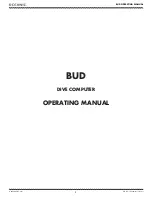
70Xi Cold Flow Properties Laboratory Analyzer
User Guide
28
A p p e n d i x A . H o w t o U s e D r y s a c
What Is DrySac?
DrySac is a small pre-packaged desiccant which can be used to remove water from hydrocarbon jet fuel
samples prior to testing.
Laboratory tests have shown that using a desiccant is an effective way to remove moisture without
introducing bias. Drysac does not remove hydrocarbon components, and has no effect on the hydrocarbon
freezing point.
DrySac can minimize the effects of moisture and improve the quality of test results in some samples,
especially in situations where atmospheric conditions may introduce water into the system. In certain
samples, using Drysac improves repeatability.
How and When to Use DrySac
When testing jet fuels, it is recommended that samples be dried prior to beginning the test run. To treat
the sample, place a fresh DrySac in an empty, clean vial. Fill the vial with enough sample to completely
cover the DrySac (between 5 - 10 mL). Put the cap on the vial and swirl the contents a few times. Let the
DrySac sample dry for a few minutes. Sample is now ready to be pipetted into the chamber.
DrySac can also be placed in sample vials to keep reference samples moisture free. Replace DrySacs with
fresh ones on a weekly or bi-weekly basis, depending on how frequently the sample vials are opened and
exposed to air.
When your Phase Technology analyzer is not being used for an extended period of time, DrySac should be
placed directly in the instrument’s test chamber. In some climates, moisture can collect in the purge
system overnight. This may result in wetness in the system when the next
Ordering information:
DrySacs (canister of 600)
DRP-06C











































